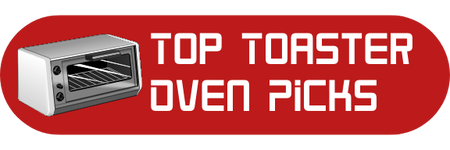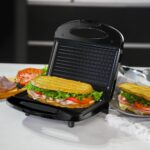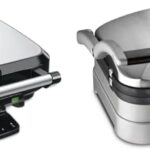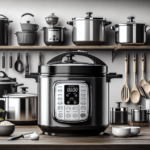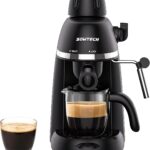So you’ve got a craving for a rich and bold espresso, but all you have on hand is regular coffee. The question arises: can you use regular coffee to make espresso? Well, the answer is not a simple yes or no. While the two types of coffee are fundamentally different in terms of their grind size and brewing methods, it is possible to achieve a makeshift espresso-like drink using regular coffee. In this article, we’ll explore the nuances of using regular coffee for espresso and guide you through the process to help you satisfy that espresso craving, even without an espresso machine.
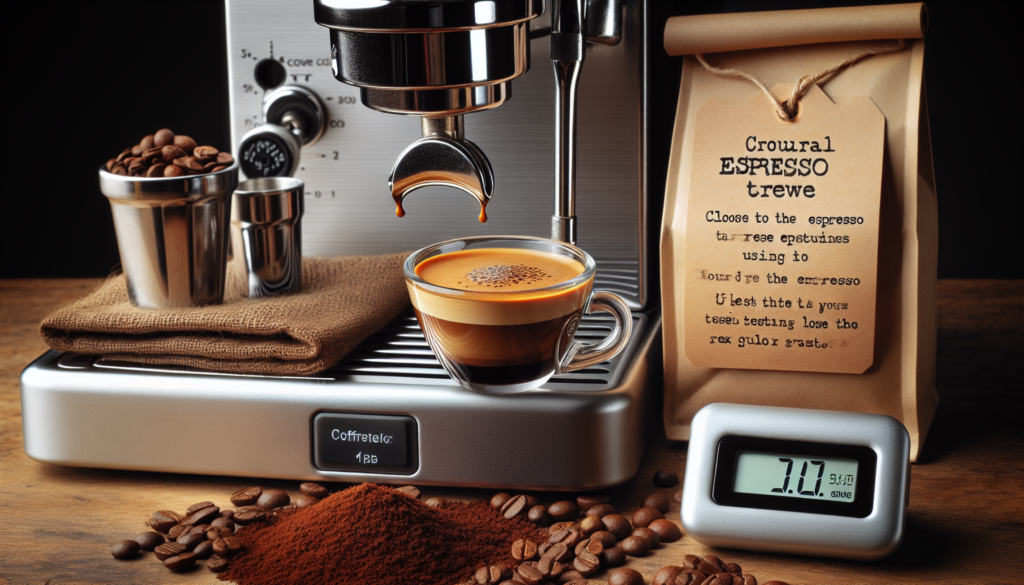
What is espresso?
Espresso is a type of coffee beverage that is known for its strong flavor and concentrated form. It is made by forcing hot water through finely ground coffee beans under high pressure. The result is a small, intense shot of coffee that is enjoyed on its own or used as a base for other drinks like lattes and cappuccinos.
Definition of espresso
Espresso is a coffee brewing method that uses specialized equipment and a specific brewing process to produce a concentrated and flavorful shot of coffee. It typically involves using a dedicated espresso machine, which generates high pressure to force hot water through compacted coffee grounds.
Characteristics of espresso
Espresso is characterized by its strong flavor, rich body, and crema – a layer of foam that forms on top of the shot. It has a higher concentration of dissolved solids and oils compared to regular brewed coffee, giving it a more intense and complex taste. The brewing process also results in a higher caffeine content per ounce than regular coffee.
Difference between regular coffee and espresso
When it comes to regular coffee and espresso, there are several key differences in terms of brewing method, grind size, roasting level, caffeine content, and taste.
Brewing method
Regular coffee is typically brewed using methods like drip brewing, pour-over, or French press, which allow water to slowly pass through coarser coffee grounds. In contrast, espresso uses a high-pressure extraction method that quickly forces water through finely ground coffee.
Grind size
One significant difference between regular coffee and espresso is the grind size of the coffee beans. Regular coffee typically requires a coarser grind, which allows for a slower extraction process. On the other hand, espresso requires a fine grind to increase the surface area of the coffee particles and facilitate the extraction under high pressure.
Roasting level
Coffee beans for regular coffee and espresso are often roasted to different levels. Espresso beans are usually roasted to a darker level, which enhances the flavor and oils in the beans, contributing to the rich and intense taste of espresso. Regular coffee beans may be roasted to various levels, depending on the desired flavor profile.
Caffeine content
Espresso generally contains more caffeine per ounce compared to regular coffee due to its higher concentration and serving size. However, a single shot of espresso typically has less caffeine than a standard cup of brewed coffee since espresso servings are smaller.
Taste and flavor
Regular coffee and espresso also differ in terms of taste and flavor. Regular coffee tends to have a milder and more balanced taste, while espresso has a bolder and more concentrated flavor profile. Espresso often exhibits a range of complex flavors, including notes of chocolate, fruit, and caramel, attributed to the brewing method and the specific coffee beans used.
Using regular coffee for espresso
While it is recommended to use coffee specifically labeled as espresso beans for the best results, it is possible to use regular coffee as an alternative. However, there are factors and adjustments to consider to achieve a desirable espresso-like extraction.
Possible alternatives
If you don’t have access to espresso beans, some possible alternatives for regular coffee include dark roast coffee, fine ground coffee, and instant espresso. These options can help mimic the taste and characteristics of espresso to some extent.
Factors to consider
When using regular coffee for espresso, it is essential to consider factors such as coffee to water ratio, extraction time, and brewing temperature. These variables play a crucial role in achieving a balanced and flavorful shot of espresso.
Adjustments needed
To compensate for the use of regular coffee, several adjustments may be necessary. These adjustments can include tweaking the grind size, adjusting tamping pressure, and modifying the brewing time. Additionally, alternative brewing methods like using a Moka pot or an AeroPress can be employed to extract a concentrated coffee shot.
Possible alternatives for regular coffee
If you are looking for alternatives to regular coffee to improve the quality and taste of your espresso-like brew, there are several options worth exploring.
Espresso beans
Espresso beans are specifically roasted and blended to enhance their flavors when brewed using the espresso method. They usually have a darker roast profile, which brings out the unique characteristics required for a rich and intense espresso shot.
Dark roast coffee
Dark roast coffee beans can be a suitable alternative to espresso beans, as they are roasted longer and develop similar bold flavors. They have a deep, smoky taste with lower acidity, making them a good choice for those seeking a robust espresso-like brew.
Fine ground coffee
Using a fine grind size can also help mimic the characteristics of espresso. Grinding regular coffee beans to a finer consistency increases the surface area exposed to water during the extraction process, facilitating a more concentrated and intense flavor.
Instant espresso
Another alternative is instant espresso, which is a powdered form of coffee that can be dissolved in hot water to create a quick and convenient espresso-like drink. While it may not provide the same complexity as freshly brewed espresso, it can be a suitable substitute in certain situations.
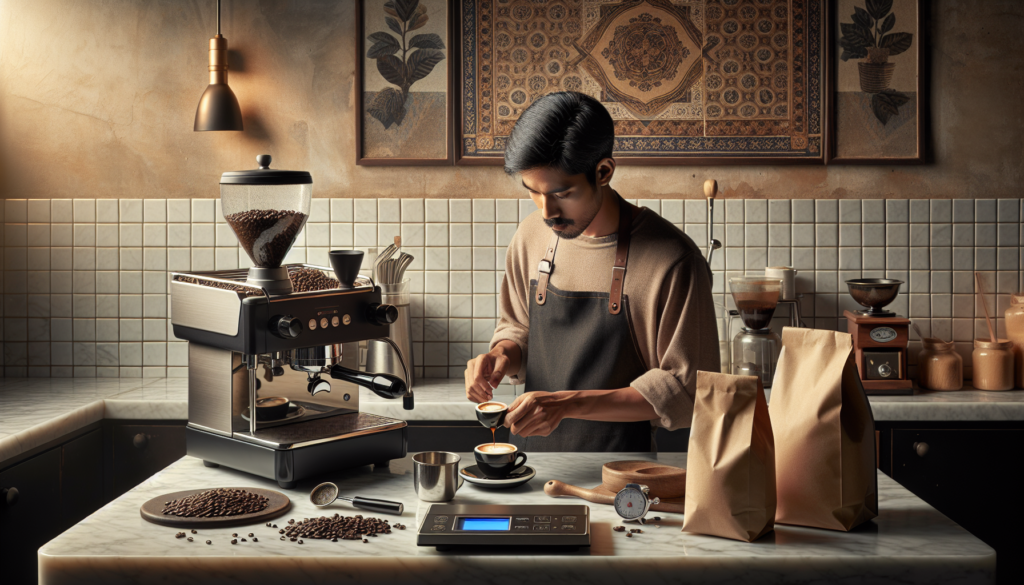
Factors to consider
When brewing espresso, regardless of whether you use espresso beans or regular coffee, there are several crucial factors to consider to achieve the best possible results.
Coffee to water ratio
Finding the right coffee to water ratio is essential for extracting the desired flavors and strength. A common starting point is a ratio of 1:2, meaning one part coffee to two parts water, but personal preferences may vary.
Extraction time
The extraction time refers to how long the water and coffee grounds are in contact during the brewing process. For espresso, the optimal extraction time is typically around 25 to 30 seconds. This timeframe allows for the extraction of desirable flavors without over-extracting bitter compounds.
Brewing temperature
Maintaining an appropriate brewing temperature is crucial to achieve a balanced and flavorful espresso shot. The ideal temperature range for brewing espresso is typically between 195 to 205 degrees Fahrenheit (90 to 96 degrees Celsius).
Adjustments needed
When using regular coffee for espresso, there are several adjustments that may need to be made to optimize the brewing process and achieve a satisfactory result.
Grind size adjustment
To mimic the fine grind size required for espresso, regular coffee beans may need to be ground to a finer consistency. Experimenting with different grind settings to find the appropriate level of fineness can help achieve a more espresso-like extraction.
Tamping pressure
Tamping, the process of compacting the coffee grounds in the portafilter, plays a crucial role in espresso extraction. Applying consistent and appropriate tamping pressure can help optimize the flow rate and ensure even extraction.
Brewing time adjustment
Since regular coffee may have different extraction properties than espresso beans, the brewing time may need to be adjusted. Monitoring the shot duration and making minor changes in extraction time can help achieve the desired balance of flavors.
Using a Moka pot
If you don’t have access to an espresso machine, using a Moka pot can be a viable alternative. Although the resulting coffee isn’t a true espresso, it can provide a similar strength and flavor profile by using finely ground coffee and applying heat and pressure during the brewing process.
Using an AeroPress
The AeroPress, a popular manual brewing device, can also be used to achieve an espresso-like coffee. By adjusting the variables such as water temperature, brewing time, and grind size, you can produce a concentrated and rich shot of coffee.
Pros and cons of using regular coffee for espresso
Using regular coffee as an alternative for espresso comes with its own set of advantages and disadvantages.
Advantages of using regular coffee
- Accessibility: Regular coffee beans are widely available and can be easily purchased from local stores or online.
- Cost-effectiveness: Regular coffee is often more affordable than specialty espresso beans, making it a budget-friendly option.
- Versatility: Regular coffee can be used in various brewing methods, providing flexibility in experimenting with different flavors and extraction techniques.
Disadvantages of using regular coffee
- Taste and intensity: Regular coffee may not achieve the same intensity and complexity in flavor as espresso beans, leading to a difference in taste profile.
- Extraction limitations: The properties of regular coffee may not align perfectly with the requirements for an ideal espresso shot, resulting in potential challenges in achieving the desired extraction.
- Consistency: Achieving consistency in flavor can be more challenging when using regular coffee due to variations in beans, roasts, and grind sizes.
Tips for brewing a good cup of espresso
To brew a delicious cup of espresso, whether using regular coffee or espresso beans, consider the following tips:
Invest in a good espresso machine
A quality espresso machine can significantly impact the taste and quality of your espresso. Investing in a machine that allows for precise temperature control, pressure regulation, and consistent extraction can make a noticeable difference in the final result.
Experiment with different coffee beans
Explore different coffee beans with varying origins, roast levels, and flavor profiles to discover your preferred taste. Trying single-origin beans, blends, and different roasts can help you find the perfect combination for your espresso.
Practice tamping and grinding techniques
Achieving consistent tamping pressure and mastering the correct grind size are crucial for optimal extraction. Practice these techniques to ensure even distribution of the coffee grounds and achieve a balanced shot.
Properly clean and maintain your espresso machine
Regular cleaning and maintenance of your espresso machine are essential for preserving its performance and extending its lifespan. Follow the manufacturer’s instructions for cleaning and descaling, and keep the machine free from residual coffee oils and buildup.
Control the variables for a consistent flavor
To maintain a consistent flavor profile, it’s important to control variables such as water temperature, grind size, and extraction time. Keeping track of these variables and making slight adjustments can help achieve a dependable and enjoyable espresso experience.
Common misconceptions about using regular coffee for espresso
There are several common misconceptions surrounding the use of regular coffee for espresso. Let’s debunk some of these misconceptions:
Espresso is a specific type of coffee bean
Contrary to popular belief, espresso is not a specific type of coffee bean. It is a brewing method that can be applied to a variety of coffee beans, including those labeled as espresso beans and regular coffee beans. The key lies in the brewing process and the fine grind size required for espresso extraction.
Espresso is only made with a specific machine
While dedicated espresso machines are commonly used for making espresso, it is not the only way to achieve an espresso-like coffee. Alternative methods like Moka pots, AeroPress, and even manual espresso makers can produce similar results with the right technique and adjustments.
Using regular coffee will never produce true espresso
While using regular coffee may not result in a perfect representation of traditional espresso, it is still possible to brew a concentrated and flavorful shot resembling espresso with the right adjustments and technique. While the taste profile may differ slightly, it can still provide a satisfying caffeine boost and rich flavor experience.
Conclusion
In conclusion, while using regular coffee as an alternative to espresso beans is possible, it requires careful consideration and adjustments to achieve a satisfactory result. By adjusting factors such as grind size, tamping pressure, and extraction time, it is possible to produce an espresso-like shot using regular coffee. However, it is worth noting that the taste and intensity may differ compared to using dedicated espresso beans. Investing in a good espresso machine, experimenting with different coffee beans, and practicing proper brewing techniques can significantly enhance the quality and flavor of your espresso-like brew. Remember, while regular coffee can mimic the characteristics of espresso to some extent, the true essence of espresso lies in the unique properties and flavors of dedicated espresso beans.
